
How Companies Like Bored Panda, REI, and Vox Are Growing Their Organic Reach on Social Media
Product Marketing @ Buffer
In 2013, a Facebook Page could easily reach about 12 percent of its fans with each post.
Just a year later, in 2014, it would reach only about six percent of its fans.
Today, in 2018, that number is very likely to be smaller than six percent. That means for every 100 fans of a Page, an organic post will reach, on average, only five or fewer people.
Is it the end of organic reach on social media?
I don’t think so.
Yes, the (average) organic reach on social media has been falling over the years. But I’m very optimistic that it’s still possible to get organic reach. Why? Because we’ve seen businesses, including ourselves, growing their organic reach on social media in the last few years.
How? Let’s find out.
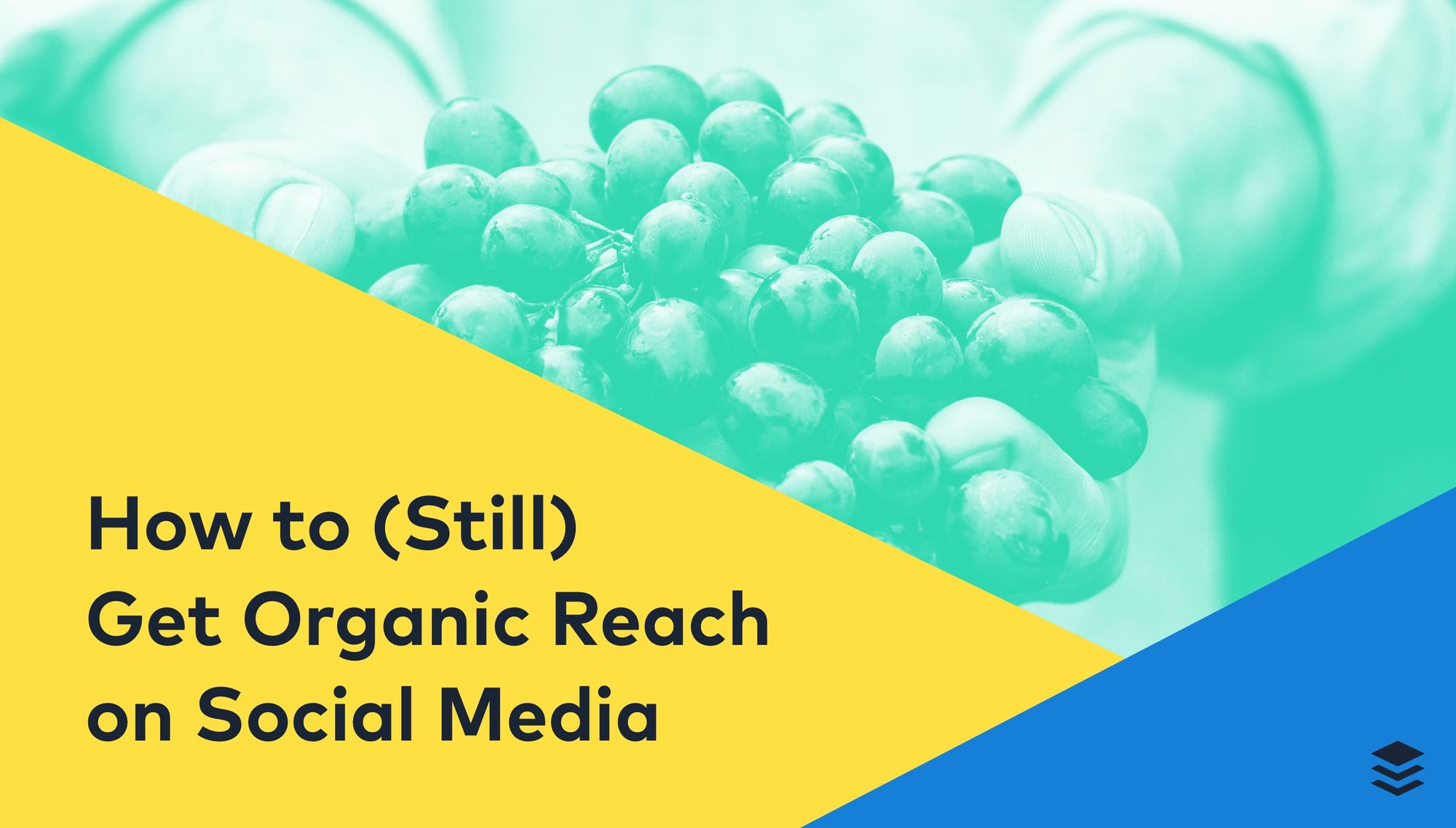
How to (still) get organic reach on social media
1. Understand and stay up-to-date with the social media algorithms
Social media organic reach is very dependent on the social media algorithms. The algorithm determines what every user sees on their timeline. And that’s why it’s key to understand how the algorithms work so as to maximize your organic reach.
The algorithm is ever-changing, always improving to make sure that users see what they want to see most. For example, in the first half of 2018 alone, Facebook reported five major changes to the News Feed (and there are probably many more small tweaks that were not reported).
So how does each of the social media algorithms work?
Facebook algorithm
The Facebook algorithm consists of four key components that organize the content people see on their News Feed: inventory, signals, predictions, and relevancy score.
In our in-depth analysis of how the Facebook News Feed works in 2018, we realized that signals are what we marketers and brands can focus on to increase our organic reach. The more active interactions, such as shares, comments, and reactions, a post has, the more people will see the post.

By posting content that connects your target audience or that naturally creates meaningful interactions (e.g. Facebook Live) or by building a niche community through a Facebook Group, you can likely get a higher organic reach. (You can read more about these tactics here.)
Instagram algorithm
Instagram recently revealed the three main factors that determine the posts a user sees on her Instagram feed:
- Interest: Posts that Instagram thinks she will be interested in will appear higher in her feed.
- Timeliness: Recent posts will tend to appear higher in her feed than older posts.
- Relationship: Posts from accounts she has regularly interacted with will also tend to appear higher in her feed.
There are also three other factors that contribute to the ranking of Instagram posts, but to a smaller extent:
- Frequency: Instagram aims to show her the best posts since her last visit.
- Following: If she follows many Instagram accounts, Instagram tries to show posts from a wide range of accounts rather than many posts from a few accounts.
- Usage: Instagram tries to show the best posts first. If she browses Instagram for a long time, she will see posts that might be less relevant or interesting to her.
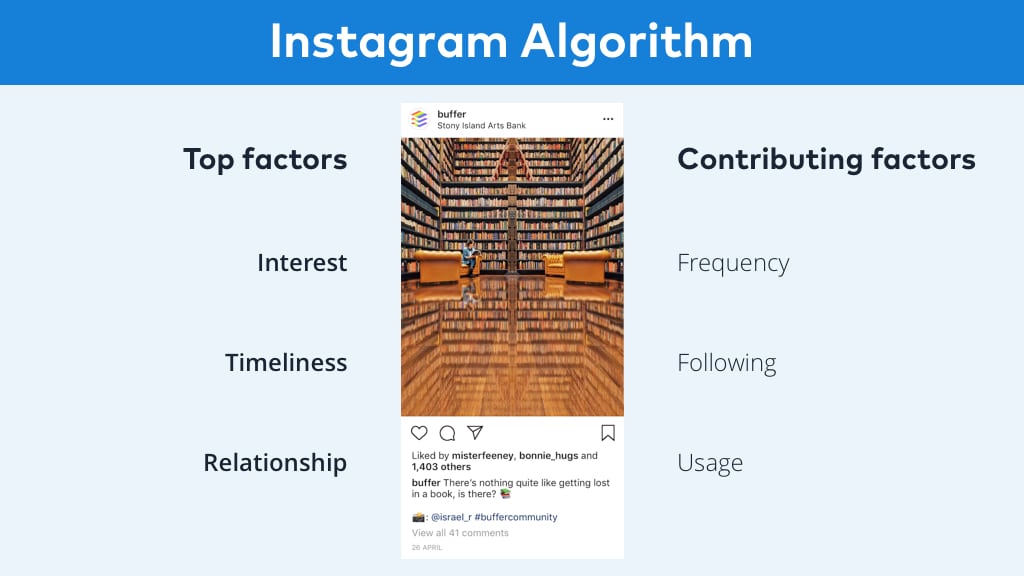
If you want to dig into the Instagram algorithm, here’s our guide on the Instagram algorithm in 2018.
Twitter algorithm
While the Twitter timeline seems mostly reverse chronological, it also uses an algorithm to show an individual the tweets that it thinks she might be interested in. Similar to Facebook, every tweet is given a score based on how relevant Twitter thinks the tweet is to her. According to Twitter, here are some of the factors it considers:
- The tweet itself: its recency, presence of media cards (image or video), and overall engagement (including retweets, clicks, favorites, and time spent reading it)
- The tweet’s author: her past interactions with this author, the strength of her connection to them, and the origin of her relationship
- You: tweets she found engaging in the past, how often and how heavily she use Twitter
Once given a relevance score, the tweet is categorized into one of the three sections on her timeline:
- “Ranked tweets” (recent relevant tweets)
- “In case you missed” (older relevant tweets)
- Remaining tweets in reverse-chronological order

It seems that the Twitter algorithm prioritizes tweets with many interactions. So here are some ways to increase your Twitter engagement, and, in turn, organic reach.
2. Fewer but better posts
“I can’t compete with the big guys, so I have to do less articles but do them better,” said Bored Panda founder Tomas Banišauskas to WIRED.
In 2016, Bored Panda was visited by about 17 million people, on average, per month. By October 2017, that number grew to 116 million — mostly thanks to organic reach on and organic traffic from Facebook. How did Banišauskas and his team do it?
Fewer but better posts.
While his competitors were hacking the Facebook algorithm, using clickbait, and growing their Facebook Page and website, Banišauskas decided against such a strategy. He believes in the importance of delivering quality content, even if that means he has to do less.
This made Bored Panda’s Facebook Page the most engaged publisher Facebook Page last October, according to NewsWhip. (Bored Panda also received the highest average engagement on LinkedIn and Pinterest among publishers.) By writing and sharing fewer but higher quality content, Bored Panda managed to avoid the fall in organic reach and traffic due to changes in the Facebook algorithm. In fact, Banišauskas thinks that “the others were losing that traffic and we were getting it”.

Using a similar fewer-but-better strategy, we also managed to grow our Facebook reach by more than three times in 2017.
When we realized that more than 100 of our posts were reaching less than two percent of our Facebook fans, we cut our posting frequency by more than half and truly focused on sharing only the best content we can find or create. This encouraged us to focus on quality over quantity and grew our Facebook reach.
If you want to implement this strategy, here are a few things you could try:
- Experiment with posting only one to two pieces of content a day
- Post only the best content you can find each day
- Never do clickbait
3. Curate user-generated content
From 2015 to 2016, Brian Peters, our then social media manager, grew our Instagram following from 4,250 to more than 21,000. That’s an amazing 400 percent growth!
His secret? User-generated content.
The easiest way to think about user-generated content is this: “brands taking the best-of-the-best user content from around the web and featuring it on their own social media or other platforms while giving credit to the original creator,” said Brian.
This is the same strategy used by brands such as REI, Birchbox, and Fedex.
So how can you apply this strategy?
A great place to start is by hosting photo contests where your customers can submit (or share with your branded hashtag) photos of your brand to win prizes. You can also encourage your followers to share photos of your brand by mentioning it in your Instagram bio.

It can take a few weeks or even months for photo contests to pick up momentum and generate enough photos for you to re-post. In the meantime, you could do hashtag searches to find Instagram posts that are relevant to your brand and re-post them.
Next is the most important step for a user-generated content strategy. You definitely should reach out to the original creator and ask for permission to re-post their photo on your profile before reposting their work.
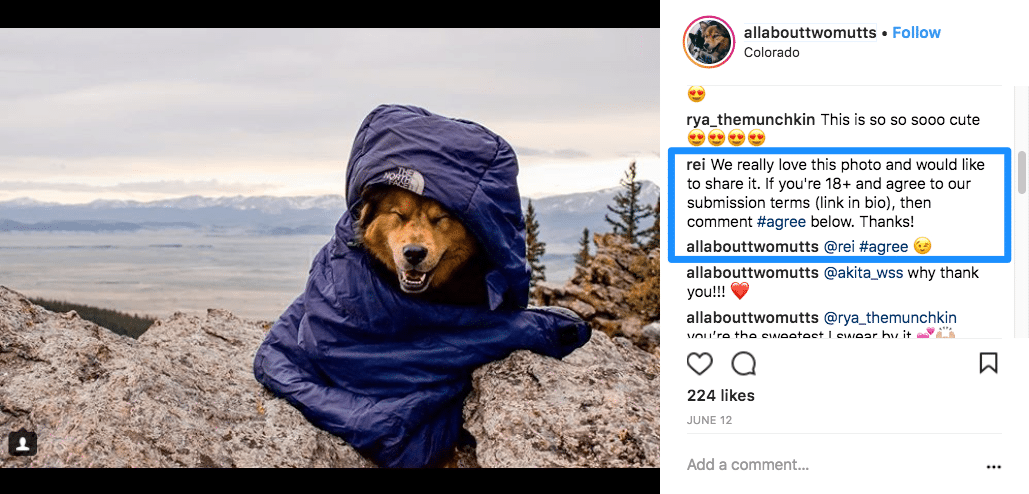
When resharing their photo on your own profile, you should also attribute the photo back to the original creator. Here are a few possible ways to attribute:
- Photo: @username
- Regram: @username
- ?: @username
If you want to run a user-generated content campaign, this blog post goes into the fine details, including examples and tools you can use.
4. Invest in groups
Imagine your fans actively posting constructive thoughts and participating in civil discussions on topics around your brand, besides simply liking your posts?
That’s what Vox has been doing with its The Weeds Facebook Group. It is a private, moderated Facebook Group for its semiweekly podcast, with more than 18,000 members, who added more than 100 new posts in the last 30 days.
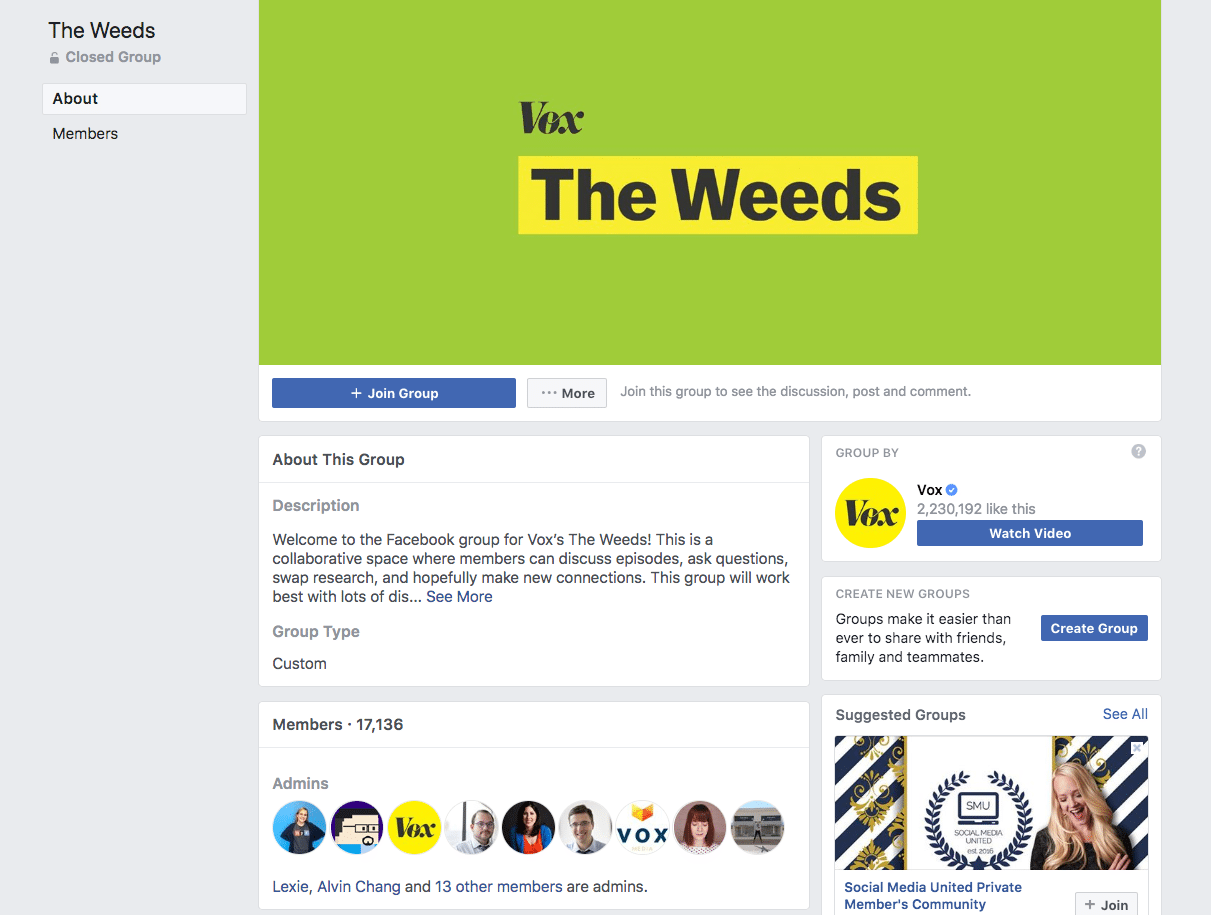
There has been a general trend towards niche and more active groups on social media, with Facebook, the largest social media network, leading the way to “give people the power to build community and bring the world closer together”.
And social media groups could become the next top channel for organic reach on social media. Members of a well-managed, active social media group, by definition, would share and comment on one another one’s posts often. Since most social media algorithms tend to show posts with lots of engagement to more people, there is a higher chance for posts from groups to show up on people’s timeline more often. More organic reach.
(I have to admit that I can’t seem to find concrete studies on whether having Facebook Groups will lead to higher organic reach. If you know of any studies or have any anecdotal evidence, I would love to hear from you.)
While it isn’t certain that having a Facebook Group would increase your social media organic reach, there is good evidence that it would boost your social media engagement. When talking about one of their Facebook Groups, Vox reported that it became a place for members to share stories and interesting articles, ask questions, and support one another. The discussions in the group also went beyond the group itself. The results of a poll in the group became a story about its members on the Vox website, another poll led to a Facebook Live Q&A, and a few members were selected to join an interview with former US president Barack Obama.
If you are interested in starting a Facebook Group (or even a LinkedIn Group), we have written some guides which you might find helpful:
- The Complete Guide to Facebook Groups: How to Create a Group, Build a Community and Increase Your Organic Reach
- Why LinkedIn Groups Can Be Great for Businesses (and How to Create a Successful One)
P.s. Here’s another quick tip: Observe what news organization and publishers are doing on social media. Reach and referral traffic to their websites are key for their survival so they would likely figure out what works very quickly once things change. For example, Facebook Groups seem to be popular among publishers now.
5. Test new social media networks
Have you heard of Musically? Or Tik Tok?
If you have not, I’m just like you before I did my research. In fact, we are not alone. Musically, a social network for video creation and live broadcasting, was once described as “the most popular app you’ve probably never heard of” by Business Insider. (Musically has since been acquired and combined into Tik Tok.)
Beside the Big Six (Facebook, Instagram, Twitter, LinkedIn, Pinterest, and Snapchat), there are many up-and-coming social media networks that are garnering the attention of people around the world. And being on them early gives your brand a first-mover advantage before the networks become crowded with other brands.
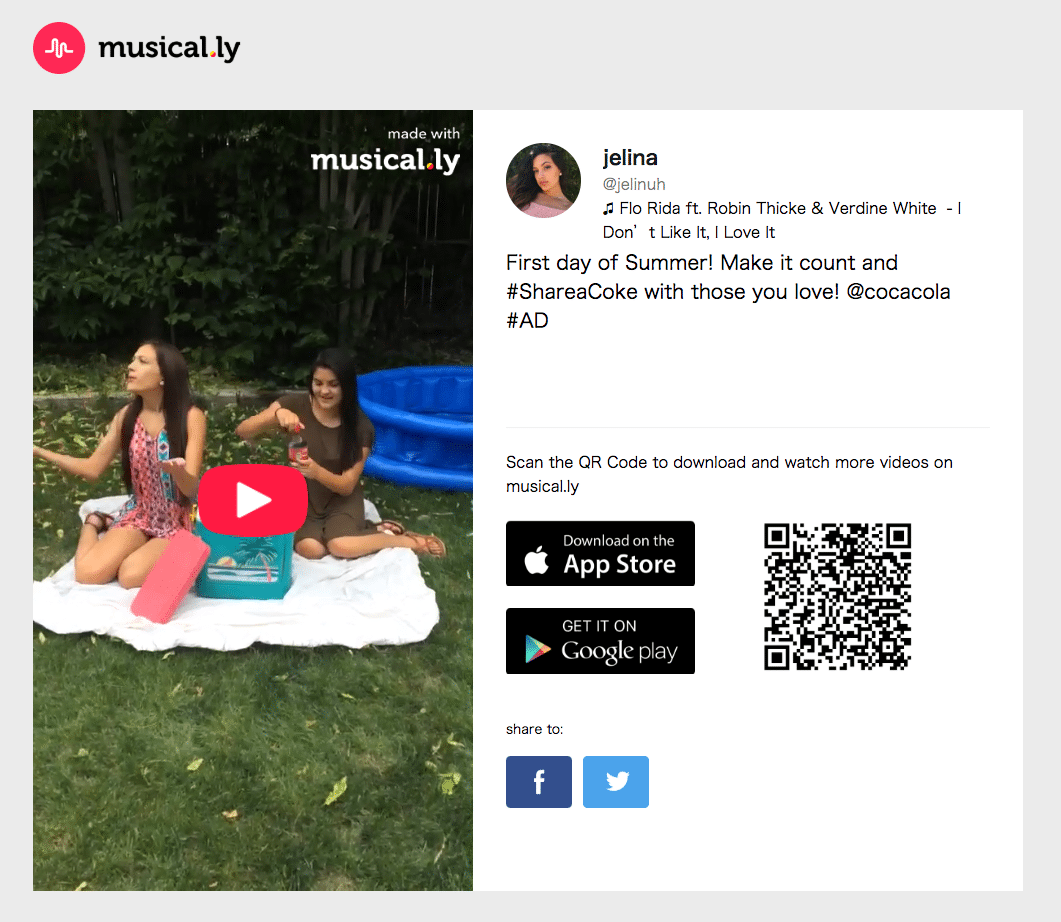
For example, Coca-Cola launched a social media campaign on Musically in 2016, making them the first brand to engage on that platform. They challenged Musically users to create Musically videos with the songs found on their Coke bottles at that time. The campaign generated more than 900,000 Musically videos and 134 million views. #ShareaCoke also became the number one trending hashtag on the platform.
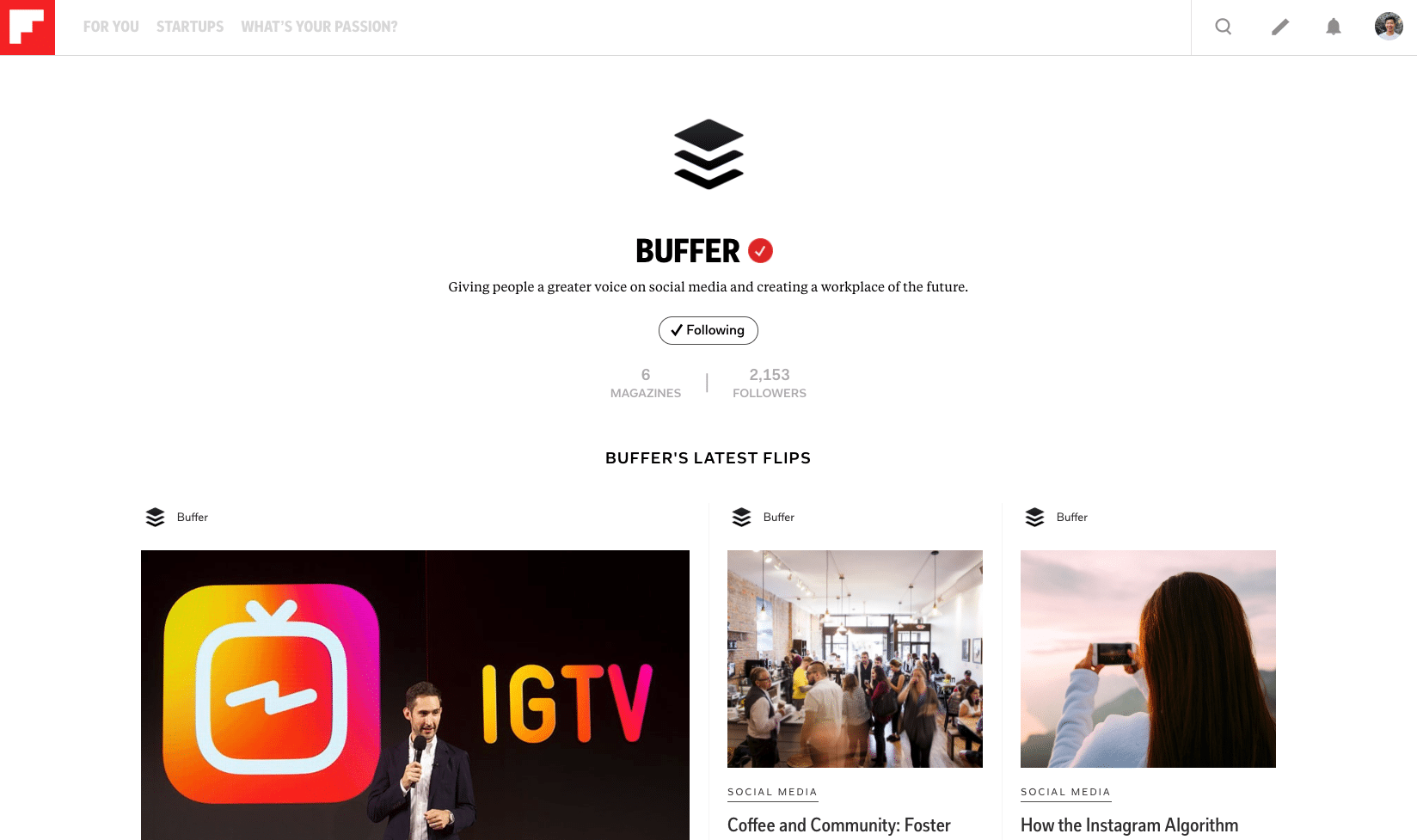
Over the last year, we also had a few successes sharing our blog posts to Flipboard. Flipboard drove between 1,000 to 3,000 visits for each of the blog posts! (Interestingly, we only have about 2,000 followers on Flipboard at the moment.)
All this isn’t to say that you should create an account for your brand on Tik Tok or Flipboard right away. But that you should keep an eye out for new (or less known) social media platforms and jump on them when it’s appropriate for your brand. Maybe that’s Tik Tok or Flipboard. Maybe it’s something else. Here are some that you might want to research into:
- Vero – an ad-free and reverse-chronological social media app
- Tik Tok (Douyin) – a music video platform and social network
- Amino Apps – a network of niche communities
- Anchor – a podcast and short audio social network
- Flipboard – a news and social network aggregator
- Medium – an online publishing network
How are you getting organic reach?
I believe that it is not the end of social media organic reach (and I also recognized that I might be biased!) Many brands and organizations, such as publishers, are closely watching the changes on major social media platforms and the rise of new social networks to adapt and grow their organic reach. Their successes are an encouragement that we can do the same if we pay attention to changes and test new ideas constantly.
It might be weird asking this since it’s such a competitive space on social media but I thought it might be worth a shot. How are you getting organic reach on social media? What tips and advice would you share with your fellow social media managers reading this blog post? I’m sure they will be grateful for your generosity.
—
Image credit: Photo by Maja Petric on Unsplash
This blog post is an adaption of Kevan Lee’s presentation at DTDConf.
Try Buffer for free
140,000+ small businesses like yours use Buffer to build their brand on social media every month
Get started nowRelated Articles

TikTok's parent company must divest the app or face a ban in the U.S. Here's everything we know, plus how to plan ahead.

Whether you’re a full-time content creator, micro-influencer, nano-influencer, or just getting started, here’s how to create your own influencer media kit.

In this article, get answers to questions about social media for solopreneurs.